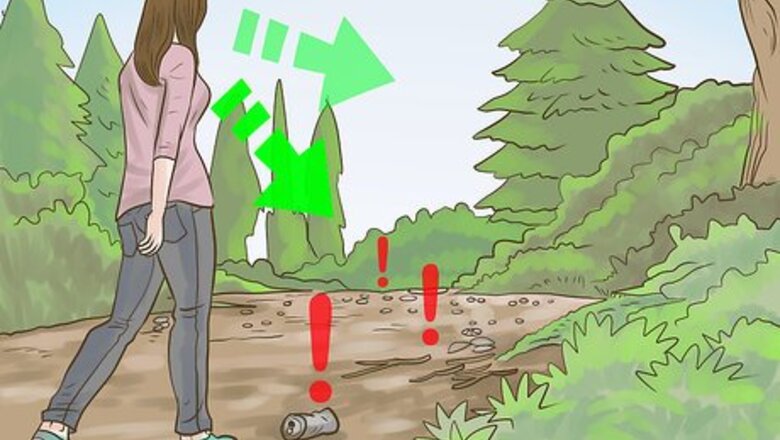
views
Moving Carefully
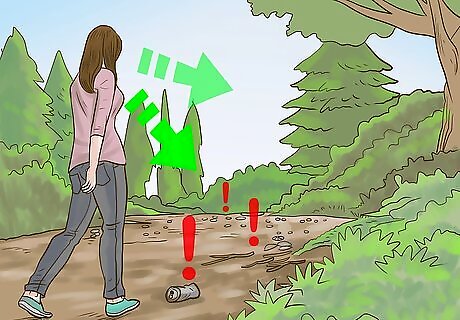
Watch where you walk. Moving soundlessly is much more difficult when you're walking on crunchy gravel and leaves than it is when you're moving over soft grass or dirt. To walk silently, assess the terrain and determine which path is the quietest. Whether you're indoors or outdoors, you can consciously walk over materials that help you move silently instead of creating extra noise. If you're walking through the woods or in another outdoor area, try to walk on soft grass or dirt. Walk on wet leaves instead of dry, crunchy ones. When walking outdoors, look for rocks or roots, as they won't crunch like leaves or twigs. Slowly put your weight onto the rock or root to be sure it won't shift or make noise. Once you are certain, put the rest of your weight down. In a city setting, avoid wooden walkways, graveled areas, cobblestones, and other materials that tend to make noise. Indoors, walk on carpeting whenever possible.
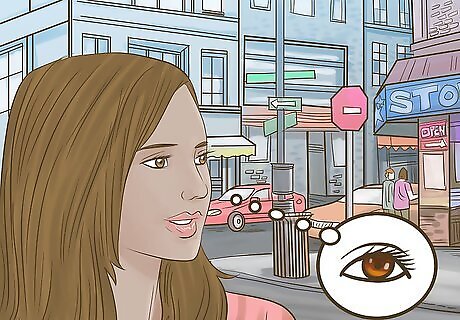
Notice your surroundings. The space you move through is as likely to create sound as the path under your feet. When you want to walk silently, it's important to stay very aware of your surroundings so that you avoid touching anything that could give you away. Avoid twigs and branches that could snag on your clothes and snap. Avoid gates and fences that could squeak or creak. Avoid brushing against piles of clutter and rustling fabrics.
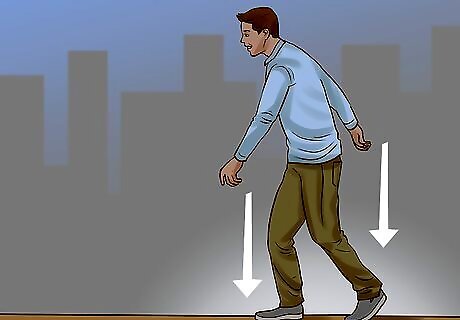
Move close to the ground. Walk in a slightly crouched position, engaging all of your muscles as you move. This lightens the amount of force that hits the ground each time you make contact, enabling you to move much more quietly. Keep your body compact, and distribute your weight evenly so you don't clunk your feet noisily against the ground.
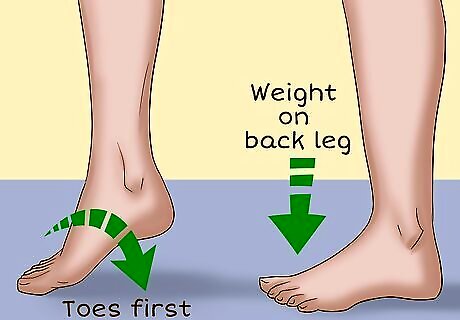
Walk toe to heel. Place the toe of your foot down first and slowly, gently roll your foot toward your heel and onto the ground. Your body weight should rest primarily over your back leg. Walk on the outer edge of your shoes if possible. If you need to move swiftly, keep low to the ground and run using the same toe-to-heel strike. Running on the balls of one's feet can help with speed and quietness, but be careful; this requires more strength in the feet and lower legs, and greater flexibility in the ankle and foot joints. It also requires a better balance than normal movement, and creates a greater impression on softer surfaces (due to the weight being spread over a decreased surface area). Land softly. Running or jumping silently is difficult, but it's possible if you master the art of landing quietly. Land in a crouched, balanced position without striking the ground too hard.
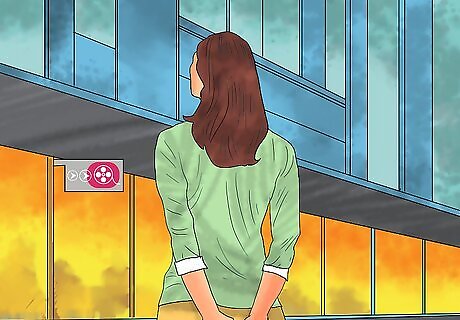
Keep your arms close. Try not to use your hands and arms by balancing yourself on walls and such, because you could knock something over and give away your presence. Instead, hold them near your sides in a comfortable position that doesn't restrict your movement.
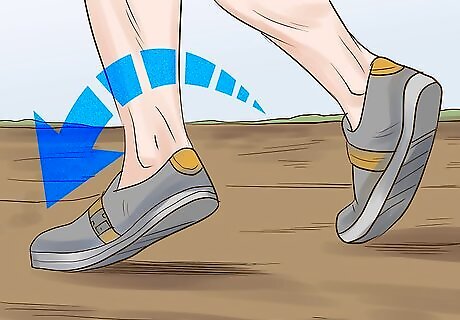
Transfer most of your weight and pressure away from your feet. Of course, you can't transfer all of your weight and pressure. Although it can't be demonstrated, theoretically, it could be described as feeling empty feet (but not numb) and feeling a pressurized head. Transferring your weight and pressure to your head might make you self-conscious of your surroundings, building up alertness. This is useful for multiple things, but primarily jumping. If there is a thick spread of dry leaves, you would need to jump. When jumping, aim for a clear spot that is not wet (e.g. puddle) and not covered with dry foliage (e.g. dry leaves or grass). Land with your toes and the front of your feet. Wearing sneakers work best as the rubber will smooth out the noise.
Wearing the Right Gear
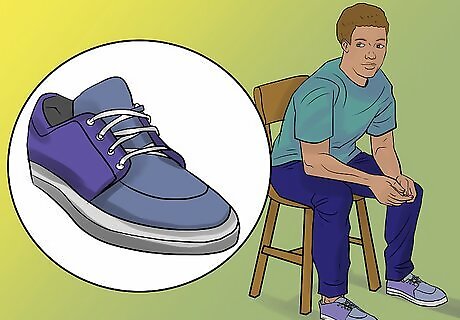
Wear soft footwear. The harder your footwear, the louder the noise. The best type of footwear is socks or leather moccasins, but form-fitting boots or sneakers also work well. Avoid hard-soled boots, shoes with heels or tough soles, and shoes that are difficult to walk in. Comfortable, soft shoes are the way to go. Sweaty socks can make noise when you walk. If you sweat too much in your socks, wear a double pair of socks to mask the sound. Walking in bare feet can be the quietest way to move, but it can also be the loudest - if you step on a sharp object and exclaim in pain, giving yourself away. Plus, if your feet are sweaty, they might stick to the coating on the floor and make a "stripping" sound. It is possible to avoid making this sound by decreasing contact with the floor and walking on the outside edges of the balls of your feet, but be careful, as this requires greater strength and balance. Decide whether going barefoot is the wisest choice for the environment you're moving through. Make sure your footwear is completely dry; not only can it squeak, but damp spots on the floor can alert someone to your presence. When these damp footprints dry, they can leave obvious "clean prints" in the shape of your shoes, especially on surfaces like concrete.
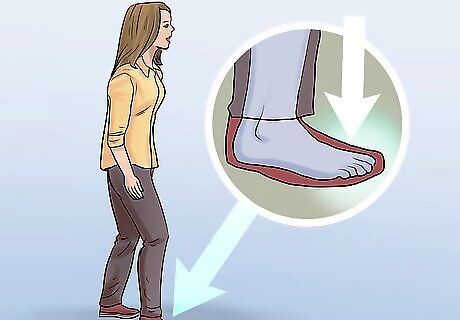
Be sure your footwear fits snugly. If your foot slides at all in your footwear, it can produce a squeaking noise, especially if your feet are sweaty. If you are wearing shoes with shoelaces, tuck the laces into your shoe. If you don't, they may click against the shoe or the floor as you walk.
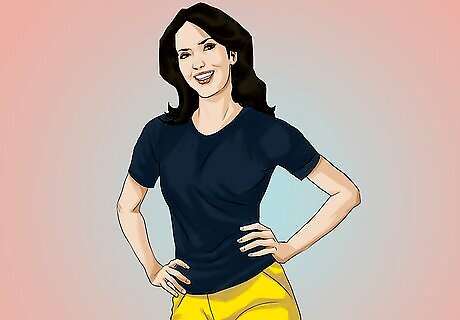
Wear sparse, tight clothing. Loose pants can rub against your legs when you're walking, making a rustling sound. Wearing tight pants can minimize this possibility. Wearing very soft clothing, light cotton sweatpants, will also keep noise to a minimum. Tuck your shirt into your pants, and tuck your pant legs into your shoes or socks. This will prevent them from flapping around. Shorts are more prone to moving around and making noise than pants, and you can't tuck shorts into your socks. If you must wear shorts, try tying a piece of string or elastic around them at your knees, but not so tightly that you will cut off circulation.
Keeping Quiet
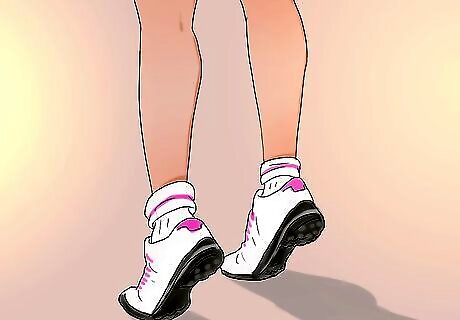
Prepare your body. If you have time to prepare before you're in a situation in which you need to walk quietly, taking small measures can help you make fewer sounds when you walk. For example, Stretch before you try to move silently. It is common that your joints and bones will click when you first exert them, so stretching before you're in the thick of the moment is a good idea. Stretching will make you feel looser and stop anything from clicking and giving away your presence. Don't go on an empty stomach but don't have a huge feast either. Your body actually gets heavier after you eat, and therefore, louder. Go to the bathroom before you attempt walking silently.
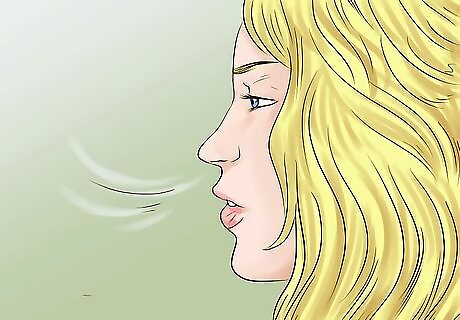
Breathe steadily. You might be tempted to hold your breath, but it's better to take slow and measured breaths from the nose. That way, you won't risk inhaling or exhaling too loudly when you need air. If you're congested, open your mouth wide and take deep, controlled breaths. You may feel your breath quicken as adrenaline moves through your body. If that happens, pause, catch your breath and take a few deep, calming breaths to ease your anxiety. Make sure you're breathing normally again before you continue.
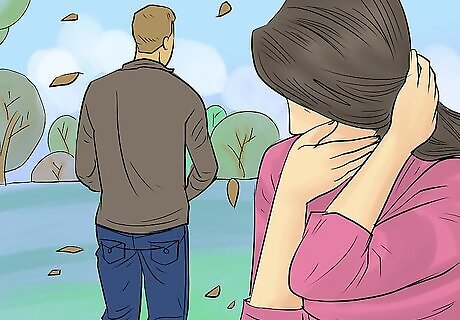
Match the cadence of another's gait. If you're following someone, you can hide the sound of your steps by walking in time with him or her. As the person steps with his or her left foot, you use your left foot and repeat with the right foot. This will help mask any noise your feet may make. Be careful not to get carried away when you're matching someone's gait - it's still important to use the proper technique for walking silently. Otherwise, if the person stops abruptly and you keep walking, you'll be caught.
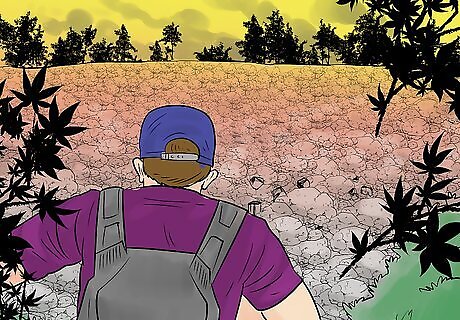
Blend with your surroundings. If you are moving through a wooded area where dry twigs, brush, dense jungle or leaves will make absolute silence impossible, move in small, erratic increments and pause: don't move in a steady plodding, marching, pounding rhythm. Mimic the sounds around you. For example, a forest might be filled with the sound of small animals foraging. They typically move a short distance, pause to sniff for food or predators and continue to move a short distance. Capitalize on any other sources of noise (gusts of wind, other animal movements, passing traffic) to suppress or camouflage sound.
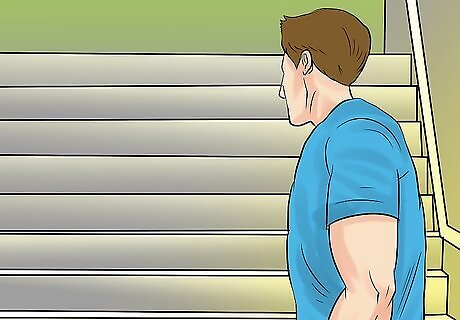
Be still when necessary. If your aim is to have the ability to move through terrain without making a sound, sometimes you'll see the need to be still. Stand still and observe your surroundings before moving forward. Take as much time as you need to notice the objects around you that could trip you up and give you away. If you're following someone or trying not to be seen, there will be moments when you'll have to practice extreme patience. Be still and wait for the person to pass, or for the tension of the situation to dissipate, before moving forward.

















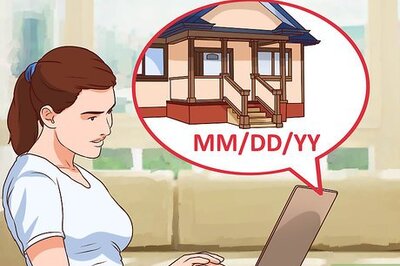
Comments
0 comment